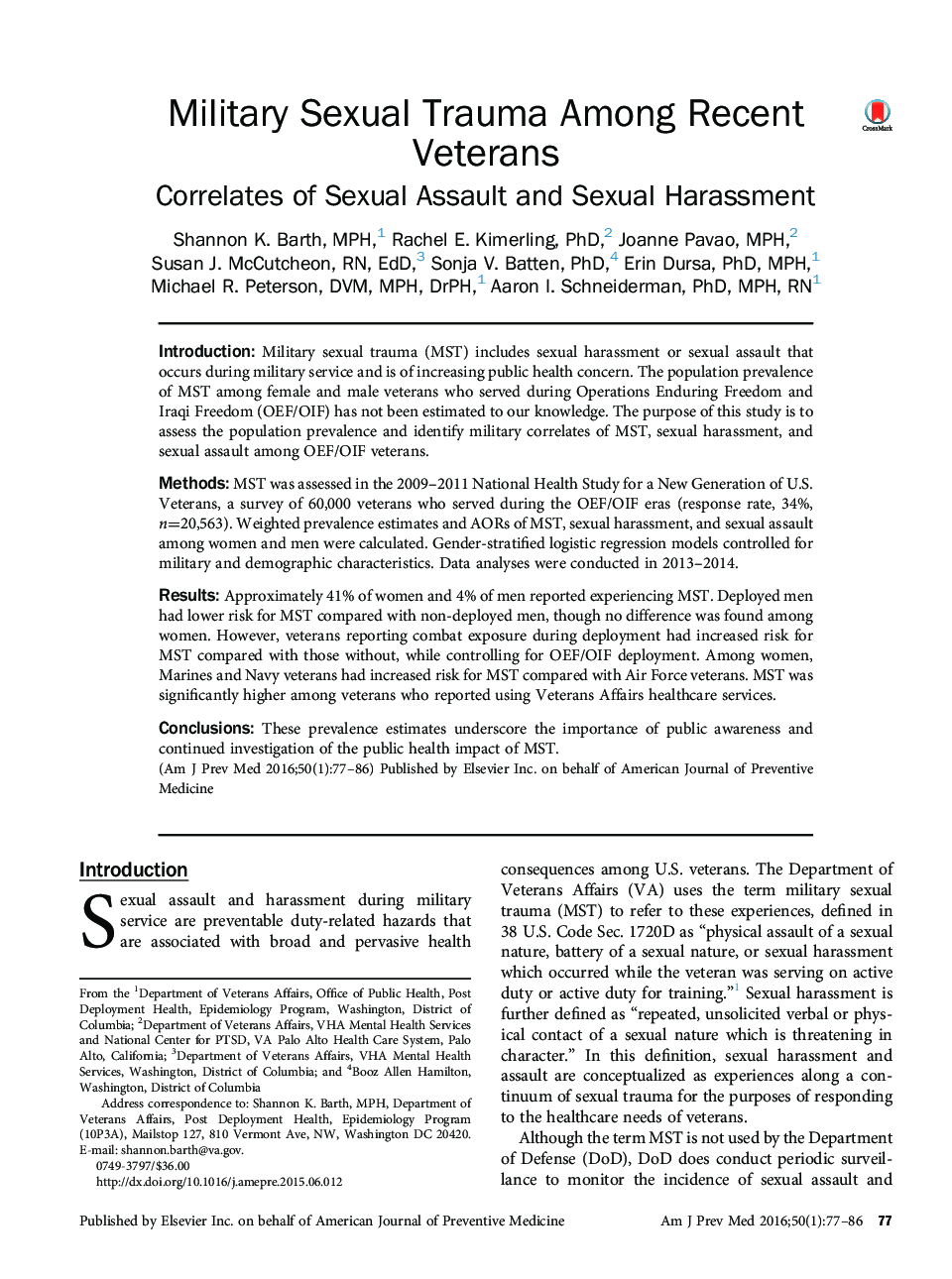| Article ID | Journal | Published Year | Pages | File Type |
|---|---|---|---|---|
| 4191979 | American Journal of Preventive Medicine | 2016 | 10 Pages |
IntroductionMilitary sexual trauma (MST) includes sexual harassment or sexual assault that occurs during military service and is of increasing public health concern. The population prevalence of MST among female and male veterans who served during Operations Enduring Freedom and Iraqi Freedom (OEF/OIF) has not been estimated to our knowledge. The purpose of this study is to assess the population prevalence and identify military correlates of MST, sexual harassment, and sexual assault among OEF/OIF veterans.MethodsMST was assessed in the 2009–2011 National Health Study for a New Generation of U.S. Veterans, a survey of 60,000 veterans who served during the OEF/OIF eras (response rate, 34%, n=20,563). Weighted prevalence estimates and AORs of MST, sexual harassment, and sexual assault among women and men were calculated. Gender-stratified logistic regression models controlled for military and demographic characteristics. Data analyses were conducted in 2013–2014.ResultsApproximately 41% of women and 4% of men reported experiencing MST. Deployed men had lower risk for MST compared with non-deployed men, though no difference was found among women. However, veterans reporting combat exposure during deployment had increased risk for MST compared with those without, while controlling for OEF/OIF deployment. Among women, Marines and Navy veterans had increased risk for MST compared with Air Force veterans. MST was significantly higher among veterans who reported using Veterans Affairs healthcare services.ConclusionsThese prevalence estimates underscore the importance of public awareness and continued investigation of the public health impact of MST.
